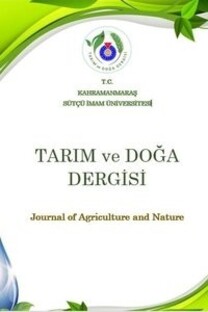First report of Rutstroemia elatina (Ascomycota) from Turkey
Rutstroemia elatina (Ascomycota) 'nın Türkiye'den ilk raporu
___
Aras S, Duran A, Yenilmez G 2013. Isolation of DNA for RAPD analysis from dry leaf material of some Hesperis L. specimens”, Plant Mol. Biol. Report, 21(4): 461–462.Baldwin BG 1992. Phylogenetic utility of the internal transcribed spacers of nuclear ribosomal DNA in plants: An example from the Compositae. Mol. Phylogenetics Evol., 1(1): 3–16.
Breitenbach J, Kränzlin F 1984. Fungi of Switzerland, vol. 1. Lucerne, Verlag Mykologia.
Hansen L, Knudsen H 2000. Nordic Macromycetes (Ascomycetes). Vol.1. Copenhagen: Nordsvamp.
Felsenstein J 1985. Confidence limits on phylogenies: An approach using the bootstrap. Evolution, 39:783–791.
Işık H, Türkekul İ 2018. New additions to Turkish macrofungi from Tokat and Yozgat Provinces. Mycotaxon 133: 697–709.
Kirk PF, Cannon PF, Minter DW, Stalpers JA 2008. Dictionary of the fungi, 10th ed. CAB International. Wallingford, UK.
Kumar S, Stecher G, Li M, Knyaz C, Tamura K 2018. MEGA X: molecular evolutionary genetics analysis across computing platforms. Mol Biol Evol 35:1547– 1549.
Öztürk Ö, Doğan HH, Yıldırımlı Ş 2010. Macrofungi of Eldivan dağ (Çankırı). Ot Sistematik Botanik Dergisi, 17(2): 141-154.
Palmer JT, Tortić M, Matočec N 1994. Sclerotiniaceae (Discomycetes) collected in the former Federal Republic of Yugoslavia. Österreichische Zeitschrift für Pilzkunde, 3: 41-70.
Raja HA, Miller AN, Pearce CJ, Oberlies NH 2017. Fungal Identification Using Molecular Tools: A Primer for the Natural Products Research Community. J. Nat. Prod., 80(3): 756–770.
Sesli E, Denchev CM 2008. Checklists of the myxomycetes, larger ascomycetes, and larger basidiomycetes in Turkey. – Mycotaxon 106: 65– 67. + [complete version, 1–36, new version uploaded in February 2014].
White TJ, Bruns T, Lee S, Taylor J 1990. Amplification and direct sequencing of fungal ribosomal RNA genes for phylogenetics. Pp. 315–322 in PCR Protocols: A Guide to Methods and Applications, eds. M. A. Innis, D. H. Gelfand, J. J. Sninsky, and T. J. White. New York: Academic Press.
- ISSN: 2619-9149
- Yayın Aralığı: Yılda 6 Sayı
- Başlangıç: 2018
First report of Rutstroemia elatina (Ascomycota) from Turkey
Sulhattin YASAR, RAMAZAN TOSUN
Samsun, Amasya, Tokat ve Eskişehir İlleri Memeli Faunası ve Türlerin Koruma Statüleri
Ahmet Yesari SELÇUK, Haluk KEFELİOĞLU
Alper BARAN, Mehmet Cemal ADIGÜZEL
Ramazan TOSUN, Sulhattin YAŞAR
The Factors Affecting Food Security in the Eastern Region of Afghanistan
Asıf Khan AHMADZAI, Cuma AKBAY
Afganistan'ın Doğu Bölgesinde Gıda Güvenliğini Etkileyen Faktörler
Cuma AKBAY, Asıf Khan AHMADZAI
An Econometric Analysis of Factors Affecting Fish Consumption: The Case of Tekirdag, Turkey
DERYA İLKAY ABDİKOĞLU, Mecit Ömer AZABAĞAOĞLU, Gökan UNAKITAN
Effects of Applying Nitrogen on Yield of Silage Maize Grown after Forage Legumes
